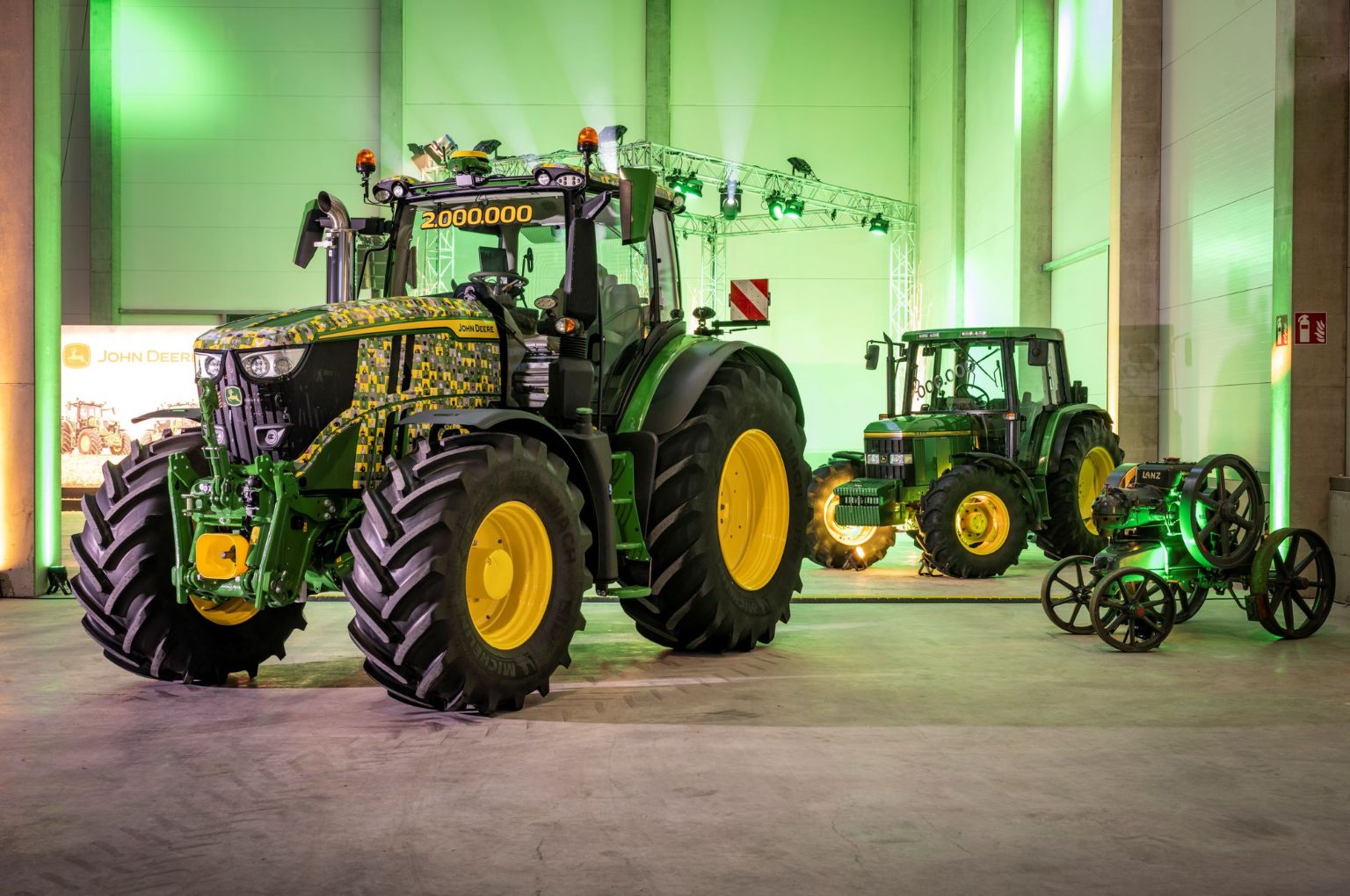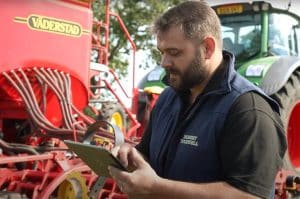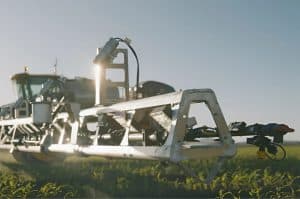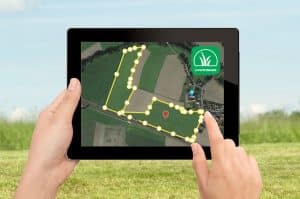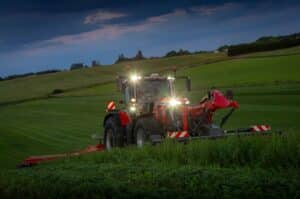The John Deere plant in Mannheim, Germany, celebrates production of its 2 millionth tractor. About 3,300 employees help produce 40,000 tractors annually, before these are exported all corners of the world. The plant is one of the most important employers in the city.
Mannheim is the city of inventors. The car, the bicycle and the tractor were invented there, and while no cars or bikes are produced in the city today, tractors continue to roll off the line in the Lindenhof district. The Heinrich Lanz company laid the foundation stone for a successful tractor factory 102 years ago with the Bulldog. John Deere tractors have been produced there since 1956.
Due to the sharp increase in production, the factory is now the largest John Deere production facility outside North America. It is also the largest tractor production facility in Germany, as two-thirds of all tractors manufactured in Germany are produced in Mannheim. The factory benefits from its convenient location along the Rhine river, via which about 250 tractors are shipped twice a week to Rotterdam or Antwerp, and then overseas.
However, the plant is not only a production site. It is also a development site for all medium sized tractors from John Deere. More than 250 engineers work on the tractors of tomorrow and beyond. The main focus is on performance, comfort and efficiency. Today’s tractor cabs offer the luxuries of a car with automatic air conditioning, AppleCar Play, comfortable seats, GPS steering and much more. Developers also put a lot of effort into clean fuel combustion; the same strict exhaust emission standards apply to tractors as they do for other vehicles. At the same time, engineers are working on alternative concepts, such as the use of biofuels. Electric drives are also being developed, albeit only for smaller tractors, as the battery capacity for larger machines is not yet sufficient.
In 2026, the first fully autonomous and battery-driven tractor delivering approximately 100hp, will be presented.
John Deere 6R and 6M tractors
The development department led the way with the introduction of the frame design on the Mannheim tractors. The sturdy bridge steel frame gives tractors stability when using heavy implements. In addition, the other components of the tractor can be built lighter. For example, the gearbox housings are made of aluminum. After the introduction of the frame design in the 1990s, production figures went steadily upwards. The current success is due, among other things, to the flagship of Mannheim production, the 6R 250. With a maximum output of 300 hp, it is the largest tractor ever built in Mannheim. Overall, Mannheim tractors cover the range from 90 to 250 hp rated power in the ‘luxury’ class.
The two millionth tractor from Mannheim
The two millionth tractor is a 6R 250. As a “thank you” to the production team, the tractor is wrapped in portrait photos of more than 300 employees. The tractor was unveiled at the Mannheim plant on 22 March in the presence of John Deere CEO John C. May. The tractor is on display at the John Deere Forum. In the long term, it will be given a place of honour in the factory museum next to its little brother, the 1 millionth tractor, a JD 6400. It took 70 years from the start of production for one million John Deeres to be produced, but the second million have rolled off the line in about 30 years.
A look into the future
With the handover of the anniversary tractor, the company is not only looking back, but also looking forward. More than USD 80 million is currently being invested in the future of the plant and in securing the location. Thanks to modern environmental technology, energy consumption is significantly lower and emissions can be reduced to a minimum. Waste water and waste are avoided and the noise level is much lower than in the previous plants.
The training workshop at the Mannheim plant is also looking back and forward. It celebrates its 100th anniversary this summer. In times of a shortage of skilled workers, it is becoming increasingly important for the company to train qualified young people. Currently, the training workshop offers 160 young people qualifications as mechatronics technicians, automotive mechatronics technicians, industrial mechanics, electronics technicians for industrial engineering and construction mechanics with a focus on welding technology.
The Mannheim location is well equipped for the future. With the two millionth tractor and further investments in assembly being made, the company is sending an important signal to the more than 3,300 employees and the Rhine-Neckar metropolitan region that it is moving forward.
The success story of Mannheim tractors
- 1921: Lanz introduces the world’s first crude oil tractor, the 12 hp Bulldog HL. The tractor is powered by a horizontal one cylinder engine, the so-called glow-head engine. The peculiar shape of the cylinder head and the protective cap above it give the tractor the name Bulldog. The tractor was designed by Dr. Fritz Huber.
- 1936: Lanz sells the first express Bulldogs. With these machines, the transport problem in agriculture can be decisively improved. The Eilbulldogs are also increasingly used by hauliers for road transport.
- 1942: The 100,000th Bulldog leaves the Mannheim factory.
- 1945: Bombing destroys 90% of all buildings on the factory site and more than half of the machines are unusable. In the summer of 1945, however, the American occupation authorities grant production permission. Reconstruction, however, proceeds slowly.
- 1953: On 9 February, the 150,000th Bulldog rolls off the assembly line. Of the tractors, 30,000 go abroad, while 120,000 remain at home.
- 1956: The 200,000th Bulldog is manufactured. At the same time, John Deere takes over Heinrich Lanz Ag with its factories in Germany and Spain.
- 1960: After almost 40 years, production of the Lanz Bulldog with the horizontal single-cylinder two-stroke engine ends. The two successor models, the John Deere-Lanz 300 with 28 hp and the John Deere-Lanz 500 with 36 hp, are launched. They are powered by modern four cylinder, four-stroke diesel engines.
- 1962/63: The tractor range is supplemented by the three models 100, 700 and 3010.
- 1967: The company name is changed again and the tractor bonnets now only say John Deere without the Lanz suffix.
- 1974: The 30 series is introduced, with the models 830 to 1130. John Deere shows an integrated, comfortable OECD-tested cab with a noise level of only 86 dB(A)
- 1980: John Deere builds the cab plant in Bruchsal. Today, the entire factory site covers 63 hectares. From 1981, the first SG2, comfort cabs come off the production line.
- 1986: The 50 Series is introduced with models from 38 to 114 hp.
- 1992: John Deere introduces the 6000 Series tractors with the all-steel bridge frame. Initially four, 4-cylinder models from 75 to 100 hp are produced.
- 1993: 72 years after the introduction of Lanz’s first crude oil tractor, the one millionth tractor rolls off the production line at the Mannheim plant.
- 1997/98: The Mannheim plant introduces the 6010 series with a suspended front axle and new PowerTech engines.
- 2001/2002: The 6020 Series is introduced to the market and covers the range from 80 to 160 hp
- 2002: John Deere offers a GPS steering system called AutoTracTM. The technology is the entry into digital precision farming.
- 2004: On 23 February, the 300,000th frame-built tractor rolls off the final assembly line. In the same year, the new training workshop is opened.
- 2005/2006: Launch of the 6030 Series with models from 115 to 203 hp.
- 2011: John Deere presents the new Mannheim 6R Series Premium Tractors. The large 6170R, 6190R and 6210R models are introduced first. In 2021, six more 4-cylinder and 6-cylinder models will be added.
- 2017: The Mannheim factory pushes into the 300 hp maximum power range with the 6250R – the most powerful model in the series from Mannheim.
- 2023: The two millionth tractor, a 6R 250, rolls off the production line.


